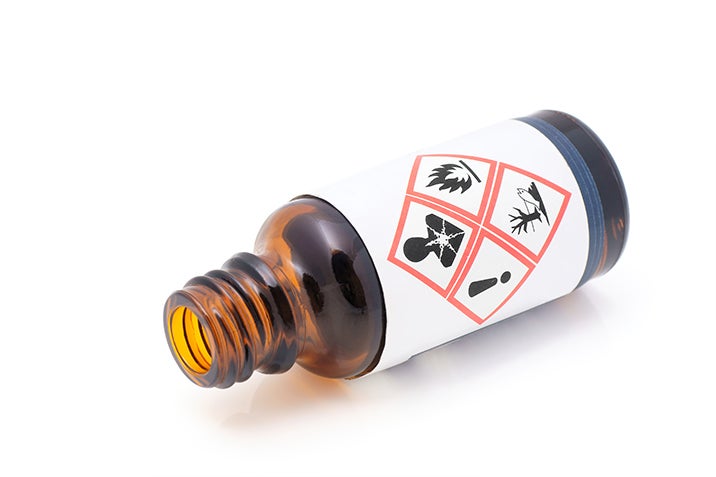Shaken, Not Stirred: Chemical Cocktail Finally Under EPA Review
The EPA will finally review the chemical cocktail used in oil dispersants.

This page was published 10 years ago. Find the latest on Earthjustice’s work.
After years of waiting, the EPA has announced it will update regulations of chemicals used in response to oil spills. This update couldn’t come soon enough. After all, as the world’s largest oil producer, it’s unlikely that the United States has seen the end of oil spill accidents. Just this week, a pipeline rupture in eastern Montana sent 50,000 gallons of crude oil onto the frozen banks of the Yellowstone River.
In 1989, the use of oil dispersants in Prince William Sound following the Exxon Valdez oil spill sparked controversy over the safety and effectiveness of these chemicals. The spill's cleanup workers reported lingering health problems long after the work was complete. In 2001, the EPA announced that it planned to rewrite the rules governing the use of these dispersants. Four years later, the National Research Council called for more research on the toxicity of dispersants to understand the impact on health and the environment from exposure to dispersed oil. Still, the EPA did nothing.
Fire crews battle the blaze on the off shore oil rig Deepwater Horizon, April 21, 2010.
US Coast Guard / Flickr
Five years after this call for research, when BP’s Deepwater Horizon oil rig gushed 3.19 million gallons of oil into the Gulf of Mexico, the EPA had still not produced new rules to govern oil dispersants. In the chaos following the disaster, the EPA approved the release of approximately 1.83 million gallons of dispersants into the ocean. These chemicals were used without adequate scientific study into how they would affect the workers who sprayed the chemicals, local fisherman and residents or the Gulf of Mexico marine ecosystems.
At the time of the cleanup, members of the public raised the same safety concerns that arose during the Exxon Valdez spill, especially the concern over the lack of available information on the ingredients in these chemical dispersants. Many of the ingredients of COREXIT 9500 and 9527, the two dispersants used, were kept secret before the disaster but were disclosed during the response effort because of the public outcry.
Protesters gather to protest BP after the Deepwater Horizon oil spill.
Mark Gstohl / Flickr
Unfortunately, because BP wasn’t privy to the ingredients of alternative dispersant products and because there had been inadequate testing and study of dispersants, the company and EPA were unable to make an informed decision about which dispersants would be least toxic under the conditions of the Gulf region.
After the Deepwater Horizon disaster, Earthjustice sued the EPA to force the agency to carry out its legal responsibility to regulate chemical dispersants as outlined in the Clean Water Act. Notably, the Act requires EPA to identify the waters in which dispersants and other spill mitigating substances can be used, and to identify in what quantity these chemicals can be used safely. This information was not available before or during the Deepwater Horizon cleanup while unprecedented amounts of dispersant were sprayed on the ocean surface and pumped sub-sea, at the source of the gushing oil.
Toxipedia Consulting Services / Earthjustice
Earthjustice also sued EPA under the Freedom of Information Act, and as a result was able to obtain a list of the chemical ingredients that are in dispersant products. See our report, The Chaos of Clean-Up, for more information.
The EPA’s failure to have a sufficient dispersant rule in place was one of many causes of the confusion, concern and uncertainty surrounding the response to the disaster in 2010. In the years that followed, studies have indicated that the use of dispersants disrupted the aquatic food chain in the Gulf of Mexico and harmed corals, plankton, sea turtles and birds. According to the Marine Environmental Research Institute, the COREXIT-oil mixture produced by BP’s response was more toxic to many species than the oil alone.
In addition to the harm caused to marine life, workers exposed to the dispersant chemicals were also put at risk. A chemical identified in one of the dispersants used by BP is known to cause injury to red blood cells, the kidney and liver after extended periods of exposure.
The EPA’s long-overdue proposed rule to update existing regulation on oil dispersants will help determine the use of these chemicals in the future. The rule will be subject to a 90-day public review and comment period. This allows stakeholders to provide input on, for example, the importance of disclosing information about what chemicals are in dispersants and the toxicity testing that these chemicals must undergo before they can be used. Follow this link for more information on the EPA’s proposed rule or to submit a comment.
Established in 2008, Earthjustice’s Northeast Office, located in New York City, is at the forefront of issues at the intersection of energy, environmental health, and social justice.